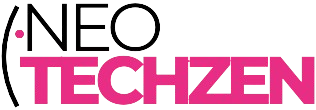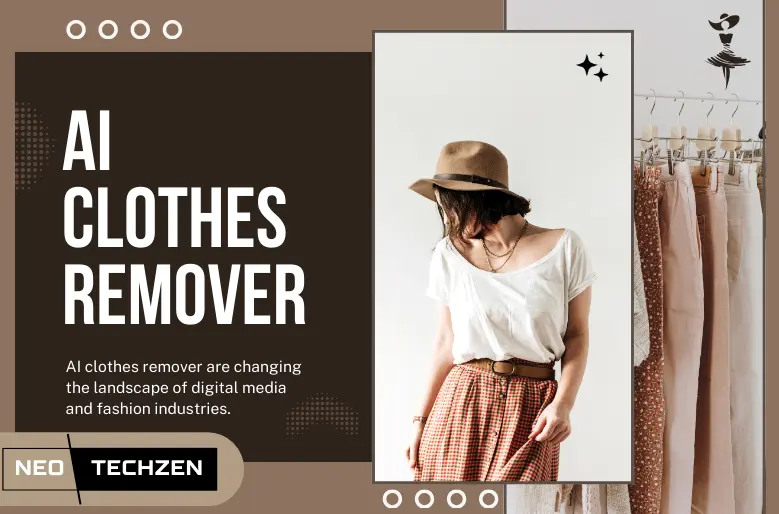AI clothes remover are changing the landscape of digital media and fashion industries in ways that are both groundbreaking and complex. In today’s rapidly developed digital landscape, technological innovations continue to reopen creative and commercial areas. One such success is the emergence of this tool that takes advantage of deep learning algorithms to remove clothes digitally from images. While this technique is revolutionizing materials in digital media and changing virtual experiences in the fashion industry, it also presents complex moral and legal challenges. This article examines how this tool is affecting digital media and fashion industries, its benefits and limitations, and what can be the future.
Table of Contents
The Technology Behind AI Clothes Remover
At its core, AI clothes remover uses advanced nerve networks that often incorporate generic adverse networks to analyze visual data. These systems are trained on large datasets of images, enabling them to differentiate between the texture of clothing and the underlying characteristics of the human body. When applied, the technique can “remove” clothes from a digital image by re-organizing the realistic view of the subject.
The process includes two major components: a generator that produces modified images and a discrimination that examines for realism and accuracy. Over time, as these networks refine their output, as a result images are faster. Recent progress has enabled rapid processing time and more adaptable output, making AI clothes remover a powerful tool for creative professionals and commercial applications.
Transforming Digital Media
Expanding Creative Possibilities
Digital artists and content manufacturers are constantly looking for tools that allow them to carry forward the limits of visual expression. AI clothes remover is one such tool. By allowing imagery manipulation at a grain level, artists can create stimulants, Avant ‘Garde’ which were once unimaginable. This technique is fueling a new wave of digital art that challenges traditional aesthetics, mixing realism with reality.
In addition, the use introduced by these tools and ease in quick processing means that creative professionals can traditionally be used more independently without essential long editing processes. Whether to create social media content or produce digital art installations, this tool is helping to democrat high-level image editing.
Enhancing Virtual and Augmented Reality
Emergent experiences are important for tangling digital audiences. Virtual and enhanced reality platforms are now incorporating image manipulation technologies to enhance user experiences.
For example:The virtual try-on application now uses this tool to simulate clothing changes in real time, offering new interactive storytelling techniques and personal visual experiences. However, while the creative ability is huge, material creators should balance innovation with moral responsibility to prevent misuse and non-consciousness manipulation.
Revolutionizing the Fashion Industry
Virtual Try-On and Design Innovation
The fashion industry has always been an early adoption of emerging technologies. This tool is now playing an important role in revolutionizing the virtual try-on system. As e-commerce continues to expand, it is important to ensure the exact size and fit. With advanced image processing, the virtual fitting room can now use it digitally for clothing away from the strip, allowing customers to see how an outfit or accessory can be combined with layered or other pieces.
Fashion designers also benefit from this technique. In the early stages of the design, the virtual models can be “undressed” and can be re-prepared with different clothing, colors and styles. This capacity accelerates the creative process, reduces the need for physical prototype, and allows designers to use it quickly with several recurrences, the brands remain agile while reducing the production costs.
Operational Efficiency and Sustainability
Beyond design and customer experience, AI plays a role in streamlining clothes remover operations. Retail vendors took advantage of AI-run image editing to manage digital catalogs efficiently. Products allow quick adjustment marketing materials to be updated near real time-an online retail rapidly a valuable property in the world with a faster book where trends shift rapidly.
In addition, integrating AI in fashion can improve stability. Increased virtual fittings for accuracy and low requirement for physical samples helps in cutting low returns, and ultimately reduces environmental footprints associated with mass production and shipping.
Risks to Authenticity and Employment
While the benefits are important, the increasing use of AI clothes remover in fashion increases concerns about authenticity and job displacement. As brands are more heavy on the AI-borne imagery for virtual campaigns, there is a risk that both can be reduced in human touch designs and modeling. The actual models and designers bring irreparable nuances and creativity that an algorithm cannot completely repeat.
In addition, anxiety over the possible misuse of such technology to create non-conscious materials is increasing. The unauthorized image manipulation can induce deep fake pornography or converted images, without permission, requiring strict guidelines and strong regulatory structures.
Pros and Cons
Before reaching any conclusions, it is important to know the pros and cons of this technique.
Pros
- Increased creativity:Digital artists and content enable creators to experiment with new forms of visual storytelling and push creative boundaries.
- operating efficiency:The image editing for digital media and fashion streamlines the process, allows for quick adjustment and real -time updates.
- Better virtual experience:Virtual tri-on and fitting room enhances technologies, providing customers more personal and accurate purchasing experiences.
- Cost reduction:The fashion design reduces the requirement of the physical prototype, reduces production costs and environmental effects.
- Data-Powered Design:The designers help designers analyze trends and consumer preferences through data analysis, informing more accurate design decisions.
Cons
- Privacy concerns:Possible misuse of technology for non-conscience image manipulation raises important privacy issues.
- Ethical challenges:Dipphak and unrealistic digital imagery can contribute to the spread, which can affect the social perceptions of beauty and authenticity.
- Job Displacement:AI dependence on AI can reduce opportunities for human models, photographers and designers.
- Legal ambiguity:The current legal framework can struggle to adequate copyright and data security issues associated with AI-based imagery.
- Quality variability:The accuracy of AI fabric remover may vary depending on factors such as the quality of the image, lighting and complexity of clothing, resulting in artifacts or unrealistic consequences.
Frequently Asked Questions (FAQs)
What is an AI Clothes Remover?
It is a software tool that uses deep teaching algorithms, often incorporating generic adverse networks to remove or replace clothes digitally in images. It rebuilt the underlying characteristics of the human body to produce realistic looking images.
How Does it Work?
It works by analyzing visual data using a trained nerve network. The generator network removes clothing and creates modified images, while the discriminatory network ensures that the results are realistic. Over time, the system improves its output by learning from large datasets.
What Are the Main Benefits of Using this Tool?
Basic benefits include increased creative possibilities for digital media, improving virtual try on experiences in fashion, improving cost and time efficiency in image editing, and support for data operated design processes.
What Are the Risks Associated?
Risks include potential privacy violations, non-consenting image manipulation, moral concerns over deep fakeness, potential job displacement in creative industries and legal uncertainty about copyright and data security.
Can AI Clothes Remover Technology Improve Sustainability in Fashion?
Yes, by enabling more accurate virtual fittings and reducing the requirement of physical samples, technology can reduce waste and reduce the environmental impact of fashion production and distribution.
Conclusion
AI clothes remover is a transformative technique that is re-shaping both digital media and the fashion industry. By enabling rapid, high-quality image editing, it is expanding creative possibilities and increasing virtual tried-on experiences. However, its adoption also brings significant moral and legal challenges, especially in areas of privacy, consent and copyright.
As digital media develops and the fashion industry embraces more data operated approaches, it is important to maintain a balance between innovation and responsibility. Through collaborative efforts and a strong regulatory framework, stakeholders can ensure that it is used to enhance creativity and operational efficiency without compromising individual rights or moral standards.
The future of digital media and fashion is associated with AI progress. By understanding and addressing the complexities of this technique- through professional and opposition analysis and integration of the ongoing public dialogue. We can unlock our full potential by protecting moral creativity and principles that outline human dignity.
Never miss an update! Follow our WhatsApp Channel for exclusive News and Blogs.


